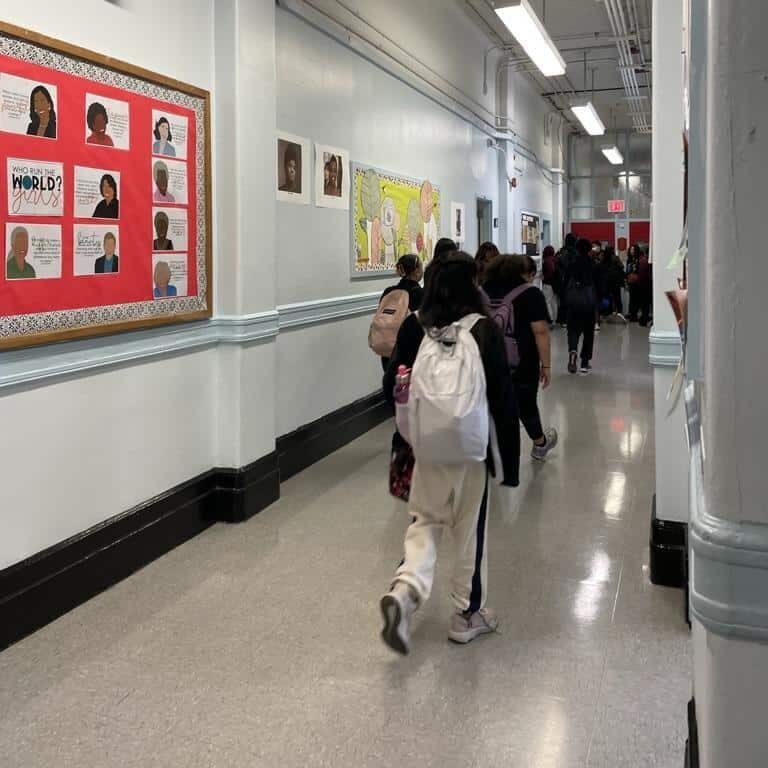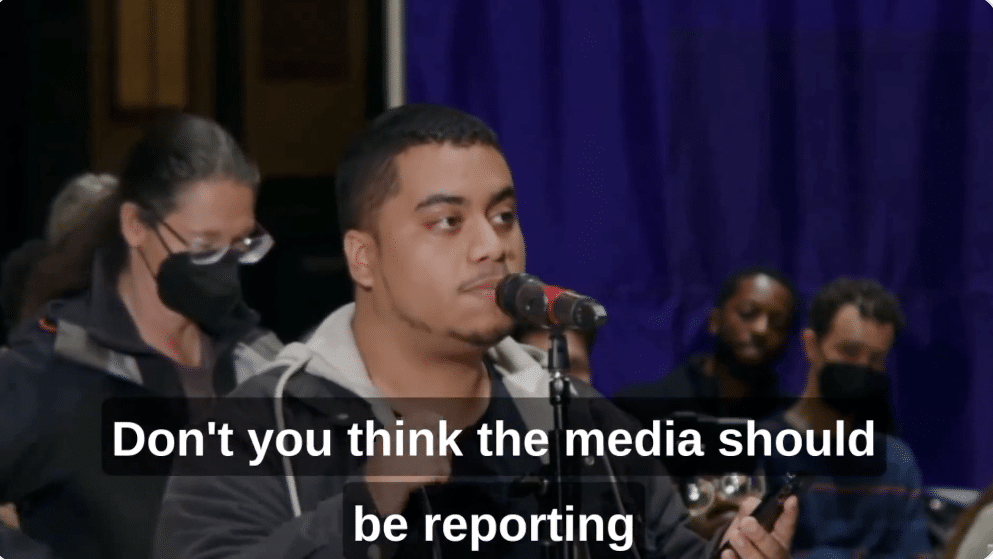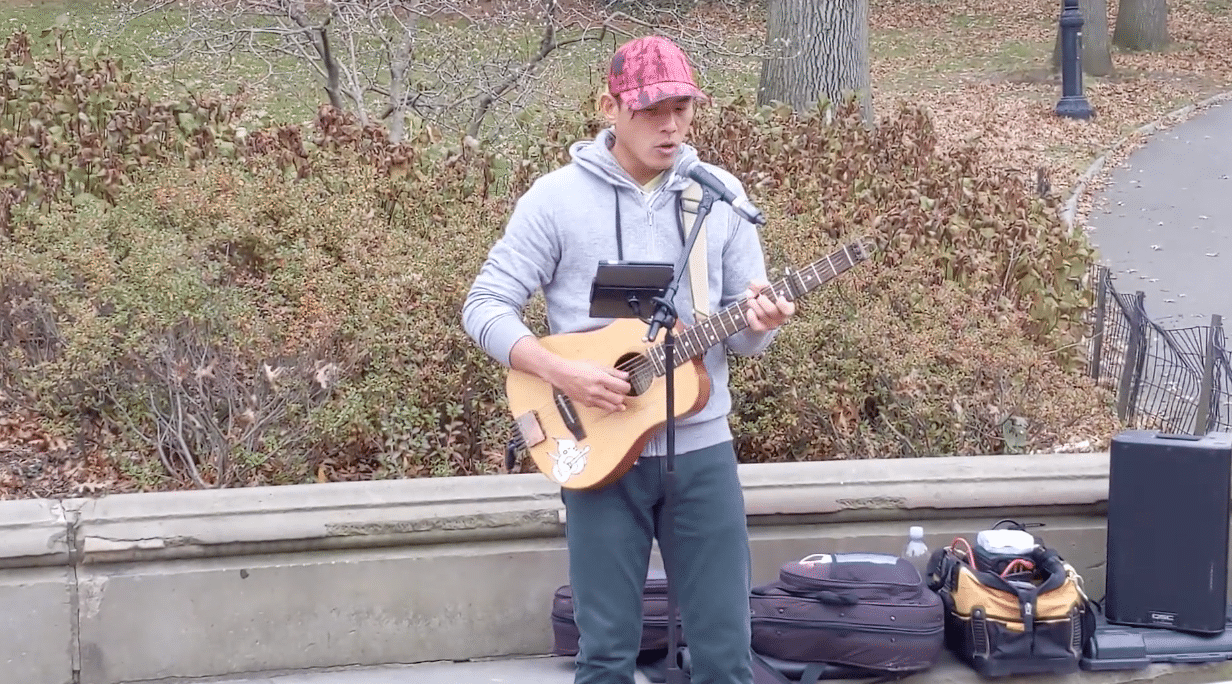Students walk to class at Charles O. Dewey Middle School.
La señora yells “TAMALES ROJOS Y VERDE” on the corner of Fifth Avenue and 41st Street in Sunset Park. If you step inside a nearby bodega you might hear the owner speaking Arabic. In New York City languages spoken by our fellow citizens take us around the world. Yet not all city schools provide bilingual education.
Many children in the wave of 46,000 plus refugees who arrived in New York during the past year speak no English. Most came from Latin America and speak Spanish. Mayor Adams pledged to invest $11.2 million into bilingual education and recruited Spanish speaking teachers from the Dominican Republic. But the gap is still wide.
Much of the problem is where the schools are located and which schools were open to accepting students. It is important for bilingual programs to expand in neighborhoods that have a large population of immigrants.
As shown in the graph above, Brooklyn has the most bilingual programs. Out of 538 NYC schools with bilingual programs, only 266 are dual language.
Transitional bilingual education teaches students to learn their home language in academic subjects while transitioning them into a monolingual English environment. Dual language programs offer students a path to become bilingual, receiving half half instruction in home language and other half in target language.
Since last Fall, 5,500 new students have been placed in shelters. The majority are migrant students and many are learning English for the first time.
At Charles O. Dewey Middle School in Brooklyn Principal Amanda Bueno is trying to serve all of her students. “In the month of October, we got 22 new students, all asylum-seeking families. Most of those students are living in nearby shelters,” she explained.
But not all schools near the shelters provide bilingual programs. Principal Bueno wishes things were different. “The more people I have, the better trained they are; that’s what’s really going to make an impact,” said Bueno. “There’s never enough money to hire unlimited teachers.”
The Department of Education (DOE) tries to provide enough paraprofessionals, teachers’ assistants, to help recent immigrant students for schools who are really in need. More funding for bilingual programs is needed and teachers that speak other languages other than Spanish would help.
Alfonsina Camillo, a Spanish teacher at P.S. 011 Purvis J. Behan Elementary School in Clinton Hill, said her school isn't eligible for a bilingual program. Under the federal No Child Left Behind (NCLB) Act, funds are distributed to a State formula program.
According to The New York State Education Department (NYSED), funds are provided to states on a formula based on 80 percent on the number of English Language Learners) (ELLs) in the State and 20 percent on the number of immigrant children and youth in the State.
NCLB Title III supports funds local and State for bilingual programs to ensure students develop high academic achievements and fluency in English. Eligibility for Title III funding is based on the count of immigrant children and youth collected by the State Education Department annually.
Hispanic/Latinos make up 28.9 percent of NYC’s population making Spanish the second most spoken language. Bilingual education mostly consists of Spanish because of the large Latinx population in the city and throughout the nation.
In Fall 2022, the Association of Dominican-American Supervisors (ADASA) brought 25 bilingual educators as part of the cultural exchange program from the Dominican Republic. This was to bring more support for immigrant students throughout the city. It provided students an opportunity to connect and share cultural experience.
Asylum-seekers continue to flow into NYC, with thousands more arriving the past few months. There is a need to increase funding for bilingual programs, expand programs into more schools and train more teachers to become bilingual. That includes expanding the language variety for students that come from non-Spanish speaking countries.
Spanish and Mandarin are most commonly taught in these programs, but not all asylum seekers speak those languages. This becomes more challenging when students don’t have the access to transition from their native language to English. After Spanish and Mandarin, there are three other languages that are mostly spoken in the city.
According to the DOE demographics of English Language Learners (ELL) shows that some students speak Arabic, Bengali or Russian at home.
“We did receive one Russian family due to the war in Ukraine, but unfortunately, we don't have a Russian program,” Bueno said.
The NYSED determines what school systems need additional language support, but that narrows down students' options to those who speak other foreign languages. Schools need 20 or more English Language Learners to provide bilingual education.
Thousands of Afghan refugees are escaping the Taliban, taking the risk to travel overseas and through the Darién Gap to the U.S. This brings a new wave of students that need that bilingual opportunity. The only issue is, there aren't enough certified bilingual educators that communicate in Dari or other minority foreign languages in the city.
“There should be bilingual classes, not only Spanish and English, but obviously any bilingual classes in all schools,” said Camillo. “It should be the common thing and that all students have access to it, not just a selective few.”
Tags: Alfonsina Camillo Astra Montanez Asylum Seekers bilingual education Charles O. Dewey Middle School in Brooklyn Principal Amanda Bueno migrant children New York City Department of Education New York City public schools
Series: Immigration






